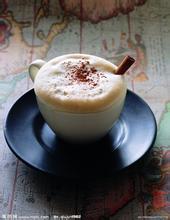The higher the altitude, the better the coffee beans.-introduction to Costa Rican coffee at high altitude.
High-quality Costa Rican coffee is called "extra hard beans". This kind of coffee can grow above 1500 meters above sea level. Altitude has always been a problem for coffee growers. The higher the altitude, the better the coffee beans, not only because the higher altitude can increase the acidity of the coffee beans and thus increase the flavor, but also because the night temperature at the higher altitude is lower, which can make the trees grow slowly, thus making the coffee beans have a stronger flavor. In addition, due to the high altitude drop caused by sufficient rainfall, is also very beneficial to the growth of coffee trees. However, while there are many advantages to growing coffee at higher elevations, the resulting additional transport costs must be taken into account, which is likely to make coffee production unprofitable. The coffee industry in Costa Rica has adopted new technologies to increase efficiency, including the use of "electric eyes" to select beans and identify coffee beans of irregular size.
In Costa Rica, people unload coffee fruits from ox carts
Tarasu is located in the capital, San.
In the south of Jos é, it is one of the most valued coffee growers in the country. Tarasu Latin America (La Minita)
Tarrazu) coffee is a famous local product, but the production quantity is limited, about 72600 kilograms per year. It is a piece called "La".
Minita), which is owned by the last three generations of the McAlpine family in England. In fact, this land can produce more than 450 tons of coffee a year. But Tarasu Latin America coffee is grown without artificial fertilizers or insecticides, and its harvesting and selection are done by hand, in order to avoid some damage to coffee beans caused by air spray selection.
Other coffees worth mentioning are: Juan
Vinas,PR, H.Tournon, Windmill,SHB, Monte bello and Ssnta
Rosa). Fine coffee is generally grown in Geredia and the central canyon. Another striking coffee is Sarchi (one of the five towns representing Costa Rica's "Coffee Road"), which grows in the Boas volcano (Poas), 53 kilometers from San Jose
Volcano) on the hillside. Saatchi, founded in 1949, has a land area of 30770 hectares and grows sugar cane and coffee. The area is also famous for its handicrafts, attracting tourists from all over the world.
The country's coffee industry was originally owned by Costa Rica Coffee Industry Company (Instituto)
Controlled by del Caf é de Costa Rica, or ICAFE), and is now under the control of the official Coffee Committee (Oficina del)
Caf é) take over. Among the exported coffee, those products that are considered to be of substandard quality are colored with blue vegetable dyes and then transferred back to China for sale. Coffee consumed domestically (dyed blue or undyed) accounts for about 10% of total production, and local per capita coffee consumption is twice that of Italy or the United States.

Important Notice :
前街咖啡 FrontStreet Coffee has moved to new addredd:
FrontStreet Coffee Address: 315,Donghua East Road,GuangZhou
Tel:020 38364473
- Prev

Introduction of Puerto Rico Coffee producing area Larez Coffee in Central and South China
Coffee in this country is generally carefully planted, with pure taste, aroma and heavy granules, among which the best is among the world's famous brands. The best coffee is Yaoke Yauco Selecto, which means Selecto. Grand Lares Yauco is produced in the southwest of the island, while Lars coffee is produced in the south-central part of the island. Gourmet coffee from Puerto Rico
- Next

Introduction of Mexican coffee beans with smooth taste, high acidity and medium mellow
High quality beans: Aldu Mara, Mexico. Taste characteristics: large particles, with a strong sweet, sour taste and good aroma. The best barbecue degree: medium fried or body fried. It is characterized by a smooth taste, high acidity, medium mellowness and a slightly nutty finish. Sweet, sour and bitter are neutral, with suitable sour taste, special and elegant taste. Although the coffee professionalism in Brazil
Related
- Does Rose Summer choose Blue, Green or Red? Detailed explanation of Rose Summer Coffee plots and Classification in Panamanian Jade Manor
- What is the difference between the origin, producing area, processing plant, cooperative and manor of coffee beans?
- How fine does the espresso powder fit? how to grind the espresso?
- Sca coffee roasting degree color card coffee roasting degree 8 roasting color values what do you mean?
- The practice of lattes: how to make lattes at home
- Introduction to Indonesian Fine Coffee beans-- Java Coffee producing area of Indonesian Arabica Coffee
- How much will the flavor of light and medium roasted rose summer be expressed? What baking level is rose summer suitable for?
- Introduction to the characteristics of washing, sun-drying or wet-planing coffee commonly used in Mantenin, Indonesia
- Price characteristics of Arabica Coffee Bean Starbucks introduction to Manning Coffee Bean Taste producing area Variety Manor
- What is the authentic Yega flavor? What are the flavor characteristics of the really excellent Yejasuffi coffee beans?

